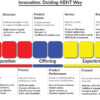
In recent times, there has been renewed optimism surrounding the US business of Indian pharmaceutical companies. Once hailed as a significant opportunity, the US market had become a burden for Indian firms in recent years due to severe price erosion and compliance issues. However, the situation has been improving, and two key factors have brightened the market prospects for Indian pharma: stabilizing price erosion and the launch of high-value products. Despite these positive developments, there remain underlying challenges that temper this optimism.
Recent Performance of Indian Pharma in the US
In the first quarter of FY24, leading Indian generic drug manufacturers with a substantial presence in the US market reported robust growth in US sales. Over the past three to four quarters, many of these companies have experienced a positive trend in their US business growth. This resurgence has pleased investors, leading to a favourable performance of pharma stocks this year. Besides improved US sales, strong growth in the domestic market and moderating input costs have bolstered market sentiment.
The Nifty Pharma index has risen by 19.5% in the past year, outperforming the benchmark Nifty 50, which gained 11.8%. In the last three months, the Nifty Pharma index gained 14.4%, again outpacing the Nifty 50, which rose by 5%.
Stabilizing Price Erosion
Price erosion in the base product portfolio of the US generic-drugs business has been a persistent challenge. To counteract this, new product launches are necessary to offset the erosion and drive growth. Over the past few years, increased price erosion was driven by consolidation among buyers and higher competition among suppliers. Additionally, several manufacturing plants of Indian companies faced punitive actions from the US regulator, hindering new product launches. Consequently, revenue growth, profitability, and return ratios for the US business declined significantly.
However, the business environment for generic drugs in the US has deteriorated globally, not just for Indian companies. According to analysts at brokerage firm Sanford C. Bernstein (India), many generic companies have been filing for bankruptcy and shutting down plants, leading to worsened drug shortages in recent months. Since 2021, drug shortages in the US have been rising steadily and have reached levels seen in 2014. This may temporarily keep price erosion in check.
Analysts at Bernstein observed that multiple generic companies, both Indian and international, are now experiencing a more favorable environment in the US generic market as buyers prioritize ensuring an adequate supply of drugs over price negotiations. During earnings calls, most companies indicated that price erosion in the US has been relatively less and they do not anticipate a drastic change in the near future.
Launch of High-Value Products
The launch of significant products in the last couple of years has also bolstered US sales for Indian pharma companies. A notable example is the generic version of the blockbuster drug Revlimid, used in blood cancer treatment. Companies like Dr. Reddy’s, Cipla, Zydus Lifesciences, and Sun Pharma have benefited from this launch. Aurobindo Pharma is also expected to launch its generic Revlimid soon. In 2022, Revlimid’s global sales stood at USD 9.98 billion, with USD 8.36 billion coming from the US market.
The original manufacturer, Celgene Corp, which was acquired by Bristol Myers-Squibb in 2019, has settled with multiple generic companies to supply limited quantities of generic Revlimid until January 2026, when the drug’s last patent expires. This agreement ensures that for some Indian companies, Revlimid will continue to be a significant revenue contributor over the next two years.
Cipla has seen good traction with its generic albuterol inhaler. Although its launches of generic versions of Advair inhaler and Abraxane have been delayed due to regulatory actions at its manufacturing sites, the company anticipates launching these products next year. Lupin, despite underperformance in the US, recently received approval for a generic version of the Spiriva inhaler, which could be a significant revenue driver. For Aurobindo Pharma, injectables and complex product launches are likely to support growth. Sun Pharma, which has moved up the value chain, is seeing increased contributions from its specialty drugs portfolio, with generics taking a back seat.
Supply Chain Disruptions and Opportunities
A significant factor contributing to the improved market conditions for Indian pharma companies is the record drug shortages in the US. According to IIFL Securities, the number of drugs under short supply surged from 271 in the first quarter of 2021 to 323 in the same quarter of 2024, marking the highest tally since the American Society of Health-System Pharmacists began recording data in 2001.
The prevailing situation in the US pharmaceutical industry is largely due to fractures in the supply chain, compounded by stringent regulatory oversight, which has affected the production capacity of generic drug manufacturers. This disruption has forced global generic manufacturers to rethink their strategies, shifting from commodity generics to more complex ones and diversifying their portfolios.
Aurobindo Pharma, Sun Pharmaceutical Industries, and Gland Pharma, with the most exposure to products experiencing shortages in the US market, are projected to benefit significantly. Aurobindo Pharma, leading with 36 products under shortage, is followed by Sun Pharma and Gland Pharma with 31 and 17 products, respectively. Analysts at IIFL Securities recommend Aurobindo Pharma as the preferred choice among export-oriented generic manufacturers, given its expansive product pipeline across diverse pharmaceutical niches.
Challenges Amid Opportunities
Despite the improved prospects, the US market remains cyclical and structurally unchanged. The Covid-19 pandemic has exacerbated the situation, triggering a surge in demand and subsequent restocking of drugs. A dramatic increase of 42% in US drug recalls, from 363 in 2022 to 517 in 2023, further fuels the shortage crisis. President Joe Biden’s administration has proposed a roadmap to address these issues, but Indian pharmaceutical companies must navigate their own challenges, including increased plant inspections by the USFDA, causing supply chain disruptions, especially for Active Pharmaceutical Ingredients (APIs) and Key Starting Materials (KSMs) from China.
Conclusion
While the current outlook for Indian pharma companies in the US market is optimistic due to stabilizing price erosion, the launch of high-value products, and record drug shortages, it is crucial to remain cautious. The cyclical nature of the market and potential for future price erosion underscore the need for Indian companies to balance their focus on the US with continued emphasis on the domestic market, which remains a key driver of growth. The lessons learned from past experiences highlight the importance of strategic diversification and prudent allocation of resources to sustain long-term growth.
Prof. Dr. Prahlada N. B
31 May 2024
Chitradurga.

















Very much true 👌🏻
Indian pharmaceutical companies such as Aurobindo, Sun Pharmaceutical Industries, and Gland Pharma are projected to make significant strides due to the current drug shortage in the US .
Analysts at Jefferies lndia Private Ltd expect strong US growth for pharma companies during Q1, which can fuel growth for Indian pharma companies
Two factors have brightened US market prospects for Indian pharma : drug shortages have curbed price erosion, and the launch of some key generic drugs has helped Indian companies regain lost ground.
Indian pharmaceutical companies have therefore been attempting to re-orientate their efforts toward developing new innovative medicines, but the transition will remain slow given the high risk levels associated with drug discovery.
Reply